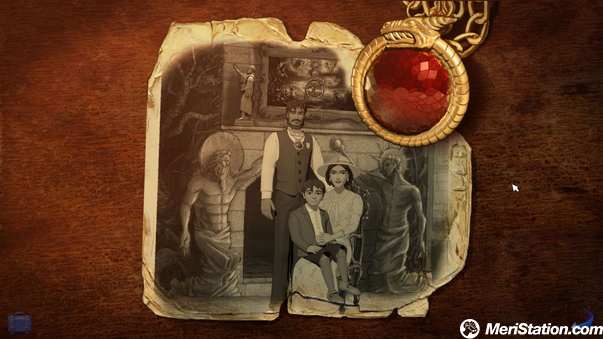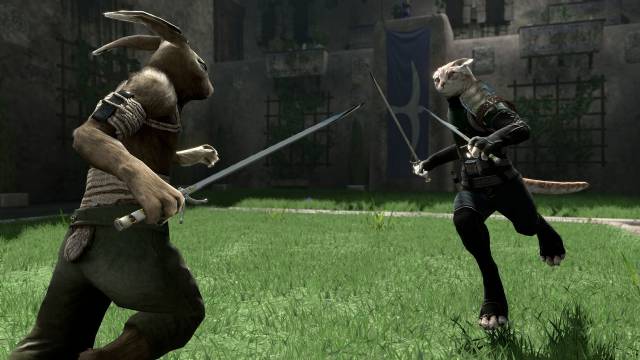” Paris in Autumn. The last months of the year and the end of the millennium. I have many memories of the city: Coffee, music, love … and death . ” The string section starts the In Crescendo. The title appears, and a crow leaves the gargoyles of Notre Dame to fly and show us a panoramic view of Paris.
The coffee Bristo , the sinister clown, the shocking explosion and the words of George Stobbart in the schismatic but inseparable voice of Tomás Rubio : ” Life continued around me, but the explosion changed my life forever”.
It seems a lie, as if it had been yesterday thanks to the magic of the Director’s Cut version that came out in 2009, but 18 years ago that Broken Sword premiered, arriving to stay ppr always. And claiming with it a position of absolute honor among the greats, on pedestals of the best graphic adventures, in the collections of adventurers and in the memories of many of us who jump from the
SCUMM LucasArts and we continued in parallel with Sierra at the same time that we were entering the shadow of a concept as exotic as the Templars.
Syria, Paris until arriving in Scotland; Hidden secrets, double backgrounds, the game with the background story which research thriller. Along with the American George and the journalist Nico, the classic mechanics of the Point & Click narrated a capital and influential work in the genre, cited by developers in later works.
We are not going to continue, it is already well known that we are facing a masterpiece with its 11 letters of the Graphic Adventure, fabulous at the visual level -this use of the great Virtual Theater engine- , challenging -very, very challenging- at the playable level. The series of Charles Cecil and Revolution Studios continued in a sequel, the Forces of Evil , whose cover – that stony face lit with magic – was one of those that when the first PlayStation was more established in 1997, invited to take it from
the shelf. But the hallmark of the saga, its cartoon 2D graphics animated by the Virtual Theater engine and that allowed hundreds of details, disappeared in The Dream of the Dragon, which also eliminated the Point & Click scheme, opting for a hybrid between a
graphic adventure and a Tomb Raider, with the usual commands of an AV on screen. Better than many remember, although criticized precisely by the playable interface, three years later the IP returned just at the beginning of this generation that ends, in 2006, at the Point & Click with
The Angel of Death, a title that does not come out In the console, it took its toll at the time of success, but it sought to return to the roots and leave the action elements of Sleeping Dragon .
Now we are here, when one generation has finished and another started. It has been 8 years and thanks to the Crowdfunding of the faithful followers, Charles Cecil has returned to his creature and has brought it to us as it should be: In 2D, loaded with depth on the stage,
but in 2D, without frills or attempts to seem like that never was It’s time to enter a new mystery with George and Nico. And, as in all good Back to Basics that boasts, we do it in a well-known scenario in the series: Paris.
At the end of 2013, the first part of a fragmented diptych that never had to be. And we say this because Broken Sword 5 can not be assessed well in this way. It was never a game by episodes, but its authors split it without further, so the whole rhythm,
progression of the story and puzzles and others resented this. Now, with the complete game, it is when you need to value it and give a global opinion taking the joint vision of all its elements. And this is what we have done, so now you will read the analysis of Broken Sword 5 and not the second part.
Adventurers, we return to a Point & Click era that fortunately studies like Pendulum or Daedalic insist that it does not disappear.
Catalonia
With almost the same notes and the same tempo as the overture heard almost 20 years ago, Broken Sword 5 begins, which copies the Shadow of the Templars plane and takes us to nothing less than the
Catalonia of the Civil War, in a prologue that introduces us to the McGuffin that moves the plot: A painting painted by a Catalan artist called La Maledicció. Suddenly jumping to the present time, a smile is placed on our lips when we see George and Nico and listen to an introduction similar to
the first lines of the first Broken Sword, only that the smile twists us when listening to them in Spanish, but not of lips of Tomás Rubio. Inside a small art gallery is where the painting that we have seen in the intro rests. A painting that costs the gallerist his life, since a supposed pizza delivery man comes to steal.


